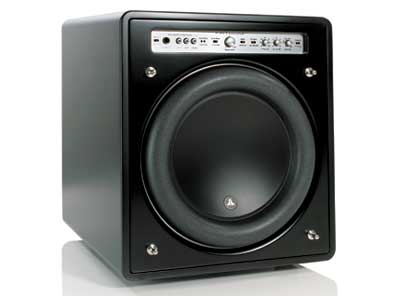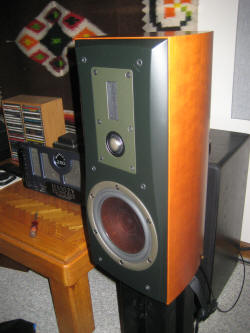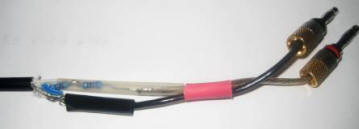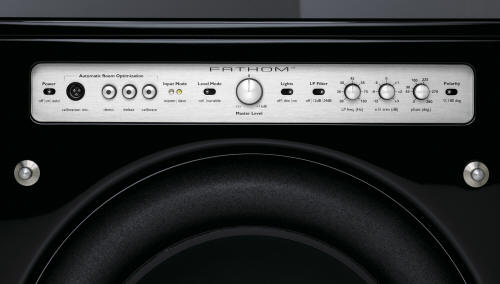Let’s ignore the bass for a few minutes and talk about the midrange. The midrange is the most critical band of sound because this is where most of our music lives and breathes. Middle C is 262 Hertz, which is not very high above the bass. Voices, bass harmonics, and the fundamental notes of almost every instrument are found in the midrange. We can usually live with sound that is missing most of the bass, and often do. Many smaller speakers are rated to only 80 or 100 Hz, but The Music is still present. Likewise, a lack of extension into the upper treble is tolerable. Sure, you would lose some sparkle and that precious “air” we cherish, but again, a small lack would not make the music unlistenable and would be tolerable, at least in the short term.

We could not enjoy music without the midrange sounds being present, and they must have excellent resolution or detail, clarity, focus, and dynamic power or all is lost, including the reason we listen to music in the first place: to hear and enjoy the meaning, emotion and quality of the performance. Due to our requirements for the midrange, a balanced sound demands that the treble is an equal partner in the characteristics of the midrange. The same level of clarity and resolution must be present or the sound will be incorrect and, ultimately, unsatisfying. The sound will be bright, or dull, or somehow incorrect and long term enjoyment will suffer as a result. Do you see where this discussion is leading?
If we are going to attempt to add or augment the bass in a music system, the qualities of the midrange must also be present in the bass or it will sound out of place in the musical performance and detract from our enjoyment of that performance. Just as the treble has to match the quality of the midrange, so must the bass match the quality of the midrange or all we have done is to unbalance the sound, actually doing more harm than good. For an added-on bass system to sound correct, it must have the same focus, detail, resolution, speed (!), impact, and freedom from distortion as does the midrange. And all of these characteristics must be present at the volume level that you enjoy.
I think we can talk now about the JL Audio Fathom f112 subwoofers. In my many experiments – and I call them that because none turned out to be long term solutions – of using subs with many different speakers, it always seemed that the bass existed as a separate entity from the midrange. I often achieved a seamless blend at the crossover frequency, but the quality of the bass never quite matched the midrange. Slower, richer, fatter, less focused, too lean, etc. The bass was not an equal partner with the midrange, no matter if I could clearly hear individual bass strings vibrating, or hear a mallet strike a drum head, or hear a train rumble though my listening room, shaking pictures and frightening small animals. The bass was never right because it was never exactly the same as the midrange, only lower in frequency. Over the years, I have tried subs from many manufacturers and also a few of my own designs. To one degree or another, more or less, I got the same result: not quite right.
The JL Audio Fathom f112 Subwoofers are “quite right”.

I installed them with several main speakers. Actually, that is not really true. With the compact size but 115 pound/52 kg weight of these solidly constructed subwoofers, I installed them just one time and then moved a variety of speakers in and out to see how they performed. They need about 200 hours of playing time to really loosen up and attain a level of fine detail and dynamic impact that enabled them to meet the performance of my main speakers, usually the exceptional Dali Euphonia RS3. The RS3 is a sealed box (which is rare these days), stand mounted 3-way that has an amazingly high level of resolution and a wonderfully natural balance. With a bottom end of 19 Hz, the f112s simply extend the main speaker’s superb performance into the lowest bass.
The character of the f112 tends towards lean and dry, instead of full and rich. If you like your thunder to roll over you in thick waves of sound, the f112 might be too analytical to suit your taste in bass. However, if your preference is for lean and mean, fast, AR-TICK-U-LIT bass performance, you must hear the fathoms. It is important to mention that your main speakers must have this same tonal quality if a perfect blend is to be realized.
A large part of the performance of any subwoofer depends on setting its volume and crossover frequency controls correctly. Please see How to Dial In a Subwoofer. This usually requires about 2-3 weeks to get exactly right, making small adjustments and then listening for the right balance between bass and midrange. It will be apparent that the adjustments are correct when you realize that it has been more than a few days of listening since the last adjustment was made. And at that moment, it becomes clear that this is the kind of bass that ported speakers can only dream about because most of that breed will never be this articulate, controlled, deep, and powerful. In fact, the bass quality from the Fathom subwoofers is so superior to that from any full range speaker I have had in my room that I offer the following observation: The passive full range loudspeaker is obsolete. Add your favorite monitor to a Fathom or two and hear how a full range speaker should sound.

My preference is to use a high level connection from the main amplifier’s speaker outputs and not a line level connection from the preamplifier. Why? Let’s take an extreme example and assume that your main amplifier is an old-style tube amp, such as a Conrad-Johnson MV-55. The bass character is warm and full and not very tight or detailed. There would be a large difference in sound character if the sub’s input was taken from the preamp because the sub would receive the tight and focused sound from the preamp instead of the warm and rich sound that the main speakers receive from the tube amp. A good blend between the subwoofers and the main speakers would be very difficult to achieve.

But using the amplifier’s outputs to feed the sub’s inputs allows a much more continuous character between the lower end of the main speakers’ frequency range and the upper end of the subs’ frequency range. Since the f112s have only line level inputs, I made a simple voltage divider (to reduce the high level voltage to line level) using two ½ Watt resistors and run the amplifier’s output signal (high level) into the RCA inputs (line level) on the subs. This also enables quick changing of amplifiers without having to readjust the sub’s level control, which is a huge benefit for me. The f112’s Master Level control is at about 10:00 to match the efficiency of the main speakers. The image on the left shows this simple circuit built into a cable before the shrink wrap was heated, which created a mechanically stable assembly. My thanks to JL Audio and Barry Ober for their help with this circuit.
All JL Audio subwoofers come with a calibration microphone and have an automatic setup routine. You plug in the mic to a socket on the front of the sub, set a level control on the sub, push a button on the sub and wait for a few minutes while a series of tones are heard from the sub. The sub then automatically sets itself to have a flat frequency response in your listening room. It works. The equalization is defeatable. It is very easy to turn off and hear the sub without it. Big difference! Of course, this is in my room, not yours, but the difference was immediately noticeable and having the equalization turned on is a large improvement by making the sound tighter, faster sounding, and a little less bloated around 40-50 Hz. This is a significant feature. There are others, such as the front panel mounted controls, ability to turn off the indicator lamps, and more. The f112’s provide the option for either a 12 dB or 24 dB per octave low-pass filter (or no filter when used with an external crossover). I set the front-panel switch during installation at the 24 dB position and never changed it. The subs are positioned just inside and about 1 foot behind the Dali’s stands, about 4″ away from and exactly parallel to the wall. This results in a time difference of less than 1 millisecond so there is little need to use the variable phase control to compensate, even if it could adjust to +0.3 degrees. Please see the JL Audio Web site (link below) for further information. Also “defeatable” is the removable grille, which I strongly recommend is set aside during listening.
The 12” driver f112 model was recommended to me over the larger 13” driver f113 because of the size of my listening room (18 x 12 x 8 feet) and because the smaller driver may be just a bit faster at the top its frequency range, potentially enabling a better match with some smaller main speakers. With the Dalis, which have a specified -3 dB point at 64 Hz, the crossover frequency is set at about 60Hz, so I doubt that the potential for better low-midrange performance is an issue. The smaller f112s have plenty of output in my room and I have never noticed any change in the quality of their sound at any volume I can tolerate. Just for comparison, my living room HT system, which includes a Marantz SR7002 receiver, Dali Mentor 5 speakers, and two 10″ DIY subwoofers, adequately fills its 4000 cubic feet of volume. I like headroom, and the Dali RS3s are driven by either 250 Watt Manley Neo-Classic 250s or 300 Watt Marantz MA9S2s. The JL Audio subs never faltered at any volume from quiet background to shake-the-house.

The f112’s internal amplifier is rated at 1500 Watts short term power. If we add up the power consumption of my system we have 3000 Watts for the two subs, 500 Watts for the Manley amps, and another 200 or so Watts for the Audio Research LS22 tube preamp, Manley Steelhead phono preamp, and assorted other gear. (These figures assume that each component is 100% efficient, which we know is not the case. Tube amps, with their significant heat output are very inefficient, especially at lower output levels.) The total all-out rockin’ power load is 3700 Watts. Using Ohm’s law, where Watts/Volts=Amps, this system draws about 30 Amps from the power grid. That is some serious juice. There is a 20 Amp circuit for my purpose-built listening room. It may be time to contact my electrician for an upgrade. But that may not be necessary because even after an hour of loud music, the Fathom’s rear heat sinks became only mildly warm. The internal amplifier is efficient and very little power is wasted as heat.
JL Audio’s quality of construction and finish – gloss or satin black – is impeccable. The f112s are easily the best subwoofers I have had in my listening room. Notice that I just said “subwoofers” and that the title of this review also includes the plural. There are many discussions and opinions about the benefit or need of having two subwoofers instead of just one. I prefer and recommend using two of them. I find that there is often some stereo information in the bass, that two subwoofers can help to minimize the normal bass modes (peaks and nulls) which afflict most listening rooms, and that two subs will certainly lower the cone excursion and potential distortion that might be present when using one sub to fill a listening room at the appropriate volume. However, with the huge 3″ maximum cone excursion of these subwoofers, it is doubtful that distortion would ever be a problem if used properly. If you have an especially large room, there is the new f212 model with two 12” drivers per enclosure or the monster Gotham, with two 13” drivers. In addition to unambiguously locking any bass instrument in a huge virtual sound stage, I imagine that a pair of either of these models could easily cause pictures to fall from your walls, crack your windows, and register on a nearby seismometer.
So there you have it: a $2900 subwoofer ($2800 in satin black) that sets a new standard for quality bass reproduction. The important “take-away” from this review is the fact that the JL Audio subwoofer does not simply “make bass”. The f112 extends the clarity and resolution of the midrange into the lowest frequencies, making them an ideal match for any similarly-voiced main speaker and offering the listener a final solution to adding or extending exceptionally high quality bass to a 2-channel music or multi-channel a/v system. I really wanted to find fault with this product and go back to using my DIY Perfect Subwoofers which have provided benchmark performance in my systems for over six years. However, the superior performance of the JL Audio Fathom f112 subwoofers is undeniable. A true reference-level component. Does it sound as if I like this product? You had better believe it!
Overall Rating: 9.5 LPs
10 Audio would like to thank Myron Hawthorne of C & M Home Theater in Palmdale, California. This review would not have been possible without his kind assistance.
Link to JL Audio
